November 25, 2017
Some Advent Fun Facts and Other Interesting Things. Did You Know...?
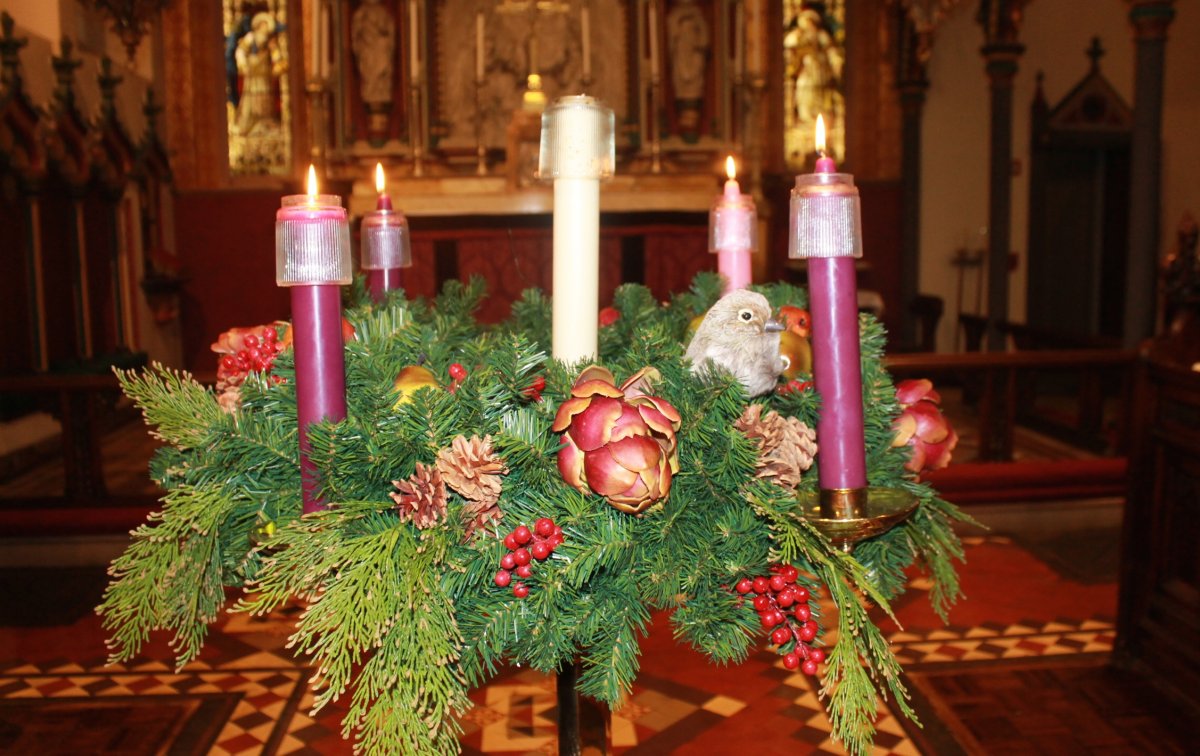
Advent is fast approaching - as is Christmas! So what is Advent, and its history and significance? (From The Voice - Christian Resource Institute, by Dennis Bratcher)
In essence, Advent is the time of waiting for Jesus. "Advent is at once a celebration of His first coming and His presence in the midst of His church, and an anticipation of His full and final coming when He will complete the work of the redemption. The word Advent must therefore be taken in the fullest sense; past, present and future. The Church not only prepares to welcome Him at Christmas time or to greet Him in the hour of His final triumph; it rejoices even now in the presence of its Lord in its midst.” (New Catholic Encyclopedia)
Late 4th century texts give January 6, Epiphany, as the date for the celebration of Jesus’ birth in the East and December 25th in the West. Advent developed in the Eastern Church as a very penitential time, much like Lent. In the West, it was very festive and celebratory. Pope Gregory the Great (590-604) inaugurated a season of preparation for Christmas called Advent, composed prayers and responses, and preached from a series of scriptures appropriate for the season.
In the 9th century there was conflict between the solemn fasting and penitence in Spain & Gaul and the feasting and merrymaking of Italy. Over time, the North mellowed and the South became more reserved! In the 11th century, Pope Gregory VII decreed the observance of a season of Advent that was to last through the four Sundays before December 25, beginning on the Sunday nearest to the feast of St. Andrew (Nov. 30) and ending on December 24. Advent season can be as long as 4 complete weeks or as short as 3 weeks & 1 day.
Pope Gregory VII declared that Advent would consist of two themes:
- Waiting with joy for the birth of Jesus in Bethlehem.
- Preparing with reverence for the second coming of Christ at the end of time.
This fusion of joy and penitence, expectation and hope, birth and judgment set the foundation for Advent Season as we know it today, and differentiates it from the season of Lent when we relive the Passion of Christ and his eventual crucifixion, and his rising from the dead, and ascension.
Blue or Violet? And What about Rose?
(From The Voice - Christian Resource Institute, by Dennis Bratcher)
Liturgical vestments and their colors have meaning and significance. Blue is the color of royalty to welcome the coming of a King. It can also symbolize the night sky in which the star appeared to announce the birth of Jesus. While purple has traditionally been the liturgical color for Advent, Royal Blue is increasingly used for Advent, especially in Protestant churches, to distinguish it from Lent. Some traditions still use Purple or Blue Violet for Advent.
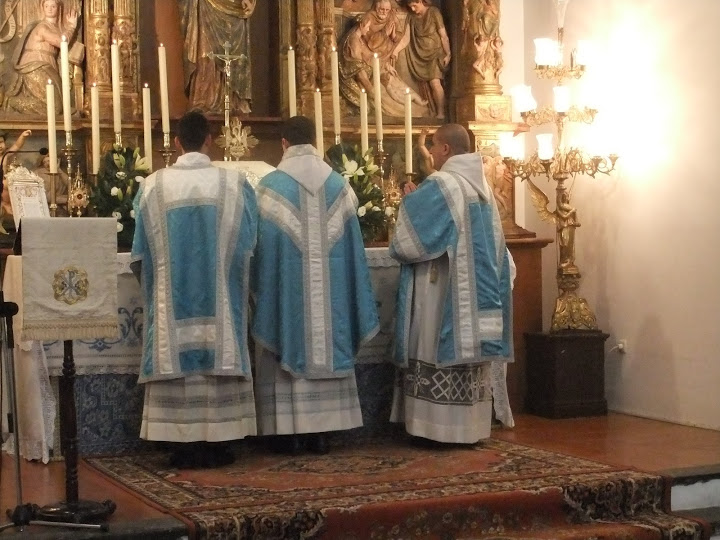
Yes, so what about Rose?
(From Wikipedia with embellishments of my own)
On Gaudete Sunday rose-colored vestments may be worn instead of violet (or blue), which is otherwise prescribed for every day in the season of Advent. Gaudete Sunday is also known as "Rose Sunday", and is the third Sunday in Advent.
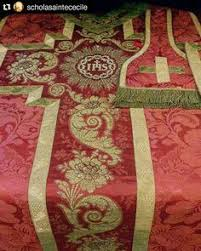
In churches that have an Advent wreath, the rose colored candle is lit in addition to two of the violet (or blue) colored candles, which represent the first two Sundays of Advent. Despite the otherwise somber readings of the season of Advent, which has as a secondary theme the need for penitence, the readings on the third Sunday emphasize the joyous anticipation of the Lord's coming.
Since I mentioned the Advent Wreath - Did you know...?
(From Wikipedia)
The concept of the Advent wreath originated among German Lutherans in the 16th Century. However, it was not until three centuries later that the modern Advent wreath took shape.
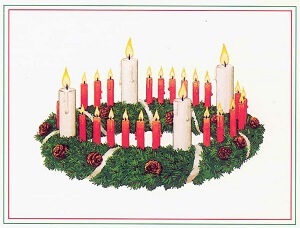
Research by Prof. Haemig of Luther Seminary, St. Paul, points to Johann Hinrich Wichern (1808–1881), a Protestant pastor in Germany and a pioneer in urban mission work among the poor as the inventor of the modern Advent wreath in the 19th century. DuringAdvent, children at the mission school Rauhes Haus, founded by Wichern in Hamburg, would ask daily if Christmas had arrived. In 1839, he built a large wooden ring (made out of an old cartwheel) with 24 small red and 4 large white candles. A small candle was lit successively every weekday and Saturday during Advent. On Sundays, a large white candle was lit. The custom gained ground among Protestant churches in Germany and evolved into the smaller wreath with four or five candles known today. Roman Catholics in Germany began to adopt the custom in the 1920s, and in the 1930s it spread to North America. Professor Haemig's research also indicates that the custom did not reach the United States until the 1930s, even among German Lutheran immigrants.
In Medieval times Advent was a fast during which people's thoughts were directed to the expected second coming of Christ; but in modern times it has been seen as the lead up to Christmas, and in that context Advent Wreath serves as a reminder of the approach of the feast.
And what about the Advent calendar?
An Advent calendar is a special calendar used to count the days of Advent in anticipation of Christmas. Since the date of the First Sunday of Advent varies, falling between November 27 and December 3 inclusive, many Advent calendars, especially those that are reusable, often begin on December 1, although those that are produced for a specific year often include the last few days of November that are part of the liturgical season.The Advent calendar was first used by German Lutherans in the 19th and 20th centuries but is now ubiquitous among adherents of many Christian denominations. In recent times, Advent calendars may have pictures inside each window, or if you're really lucky, a chocolate! Growing up in Germany as a child, the first time I got one with chocolates...WOW!
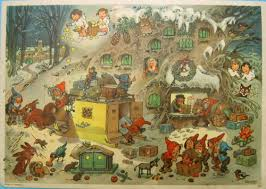
And then there's St Nicholas...
St. Nicholas' Tag was a tradition my family started observing when we first lived in Karlsruhe, Germany, in the early 1960s. Here's some background on the holiday: (from Wikipedia)
St. Nicholas' Day, observed on December 6 in Western Christian countries, December 5 in the Netherlands and December 19 in Eastern Christian countries, is the feast day of St. Nicholas. It is celebrated as a Christian festival with particular regard to his reputation as a bringer of gifts, as well as through attendance at Mass or worship services. In Europe, especially in Germany and Poland, boys would dress as bishops begging alms for the poor. In Ukraine, children wait for St. Nicholas to come and to put a present under their pillows provided that the children were good during the year. Children who behaved badly may expect to find a twig or a piece of coal under their pillows. In the Netherlands, Dutch children put out a clog filled with hay and a carrot for St. Nicholas' horse. On St. Nicholas' Day, gifts are tagged with personal humorous rhymes written by the sender. In the United States, one custom associated with St. Nicholas' Day is children leaving their shoes in the foyer on St. Nicholas Eve in hope that Saint Nicholas will place some coins on the soles.
We were living in Heilbronn, Germany, near Frankfurt and Stuttgart. It was St. Nicholas' Tag, and my younger brother, sister and I had put our snowboots in the hallway, waiting for him to come. My parents said. "Oh, I think St. Nicholas has come by!" We opened the door - oh indeed, he had! Suddenly, my brother burst into tears - no presents, no chocolates. Only switches. Why? He hadn't finished his dinner, because he didn't like something we were having (stewed tomatoes).
He ran to the table - "If I finish eating these, will he come back?" "Maybe..." said my parents.
Well, he finished those hated stewed tomatoes. And guess what? St. Nicholas dropped by, just in case. My brother did get his goodies - but one switch remained... just as a reminder.

Wishing everyone a Good Advent,
Steve Leavitt
